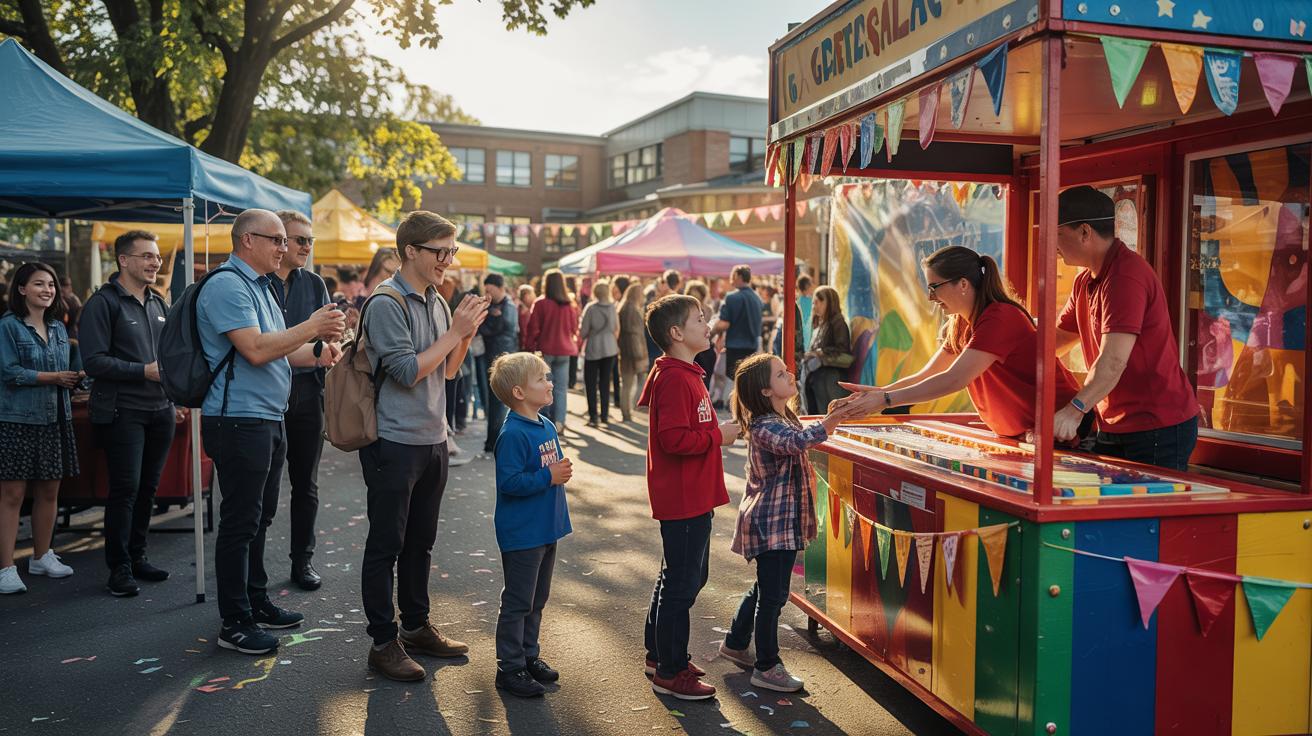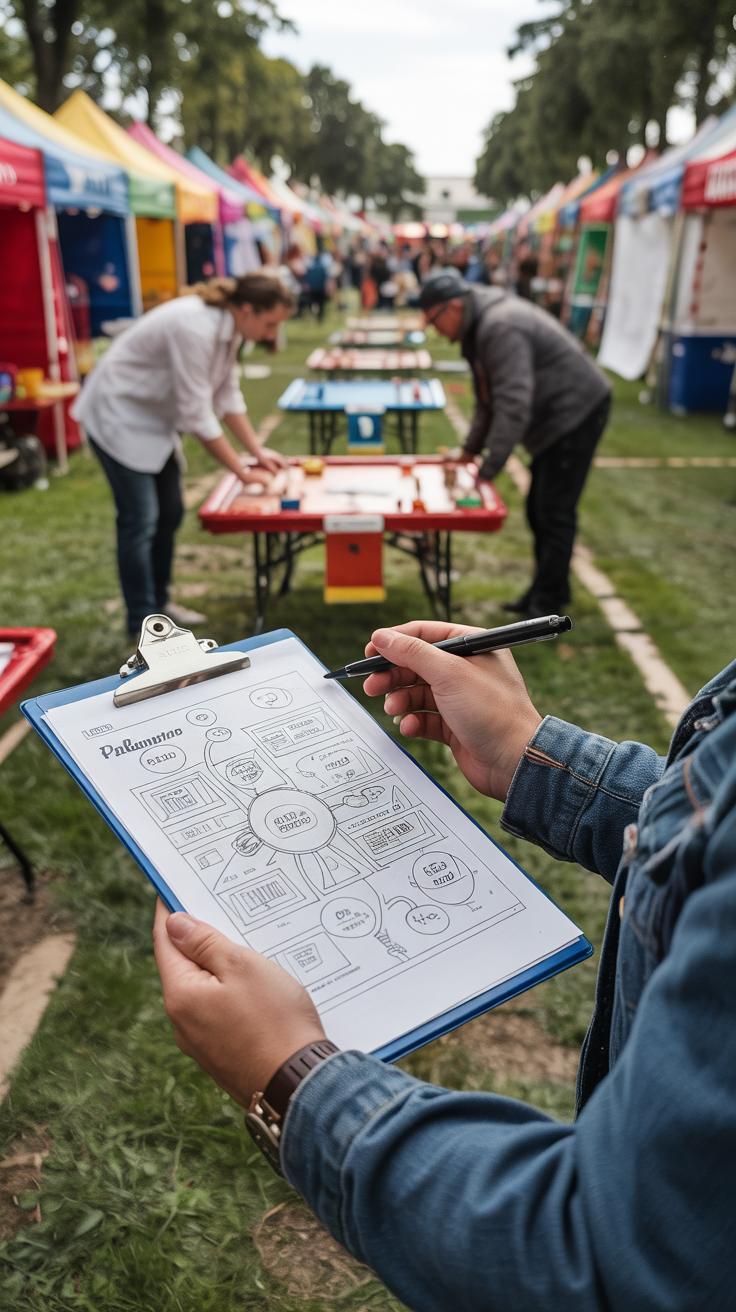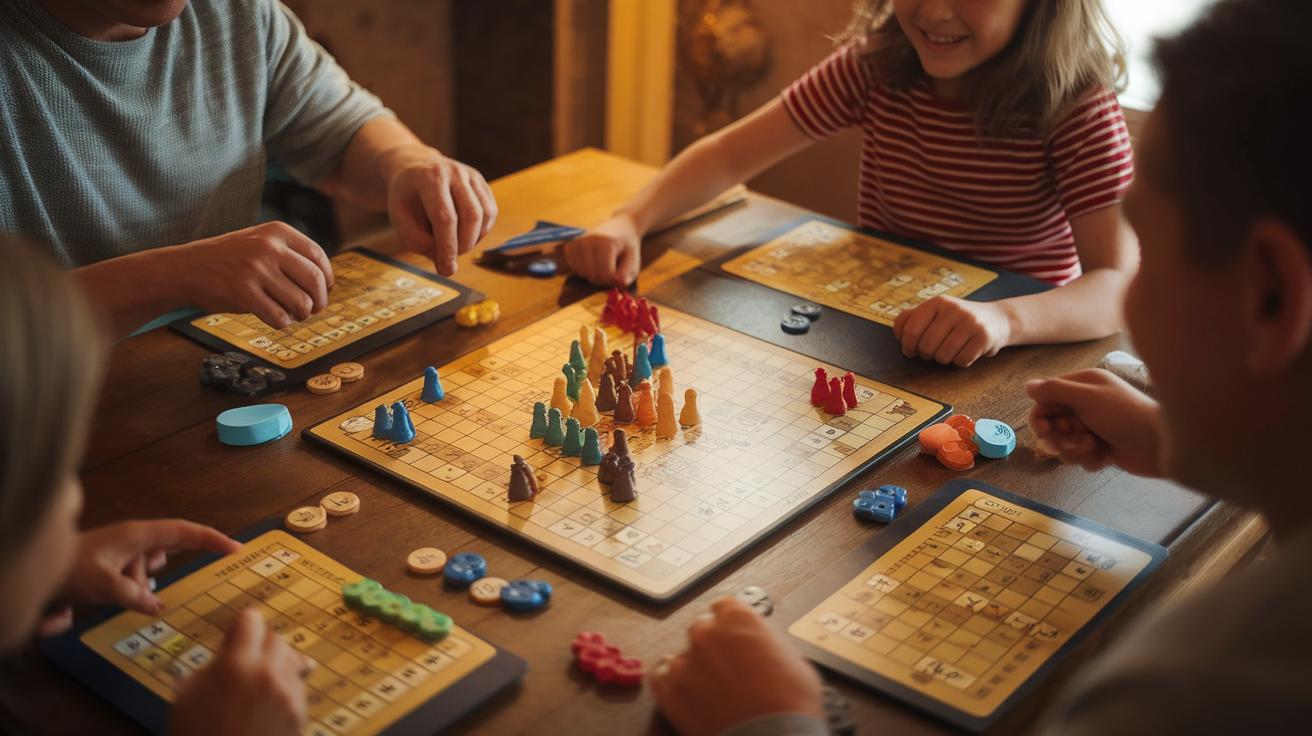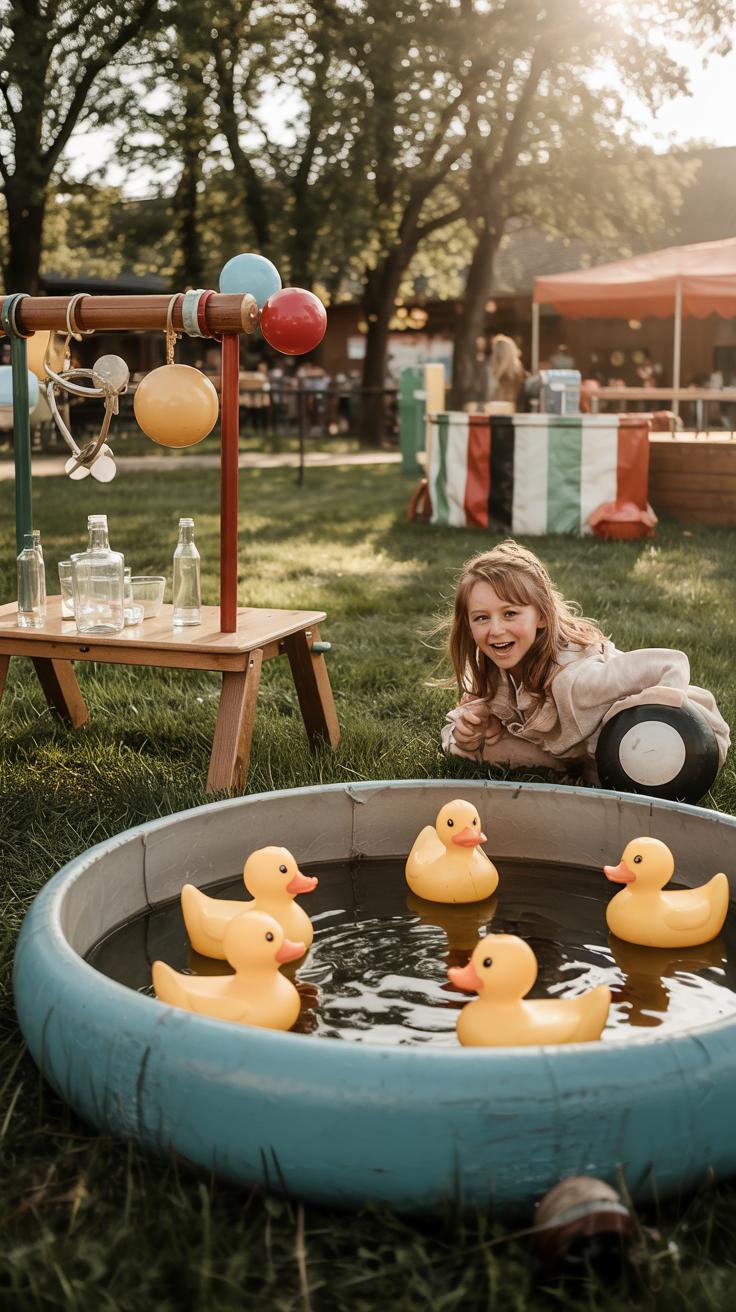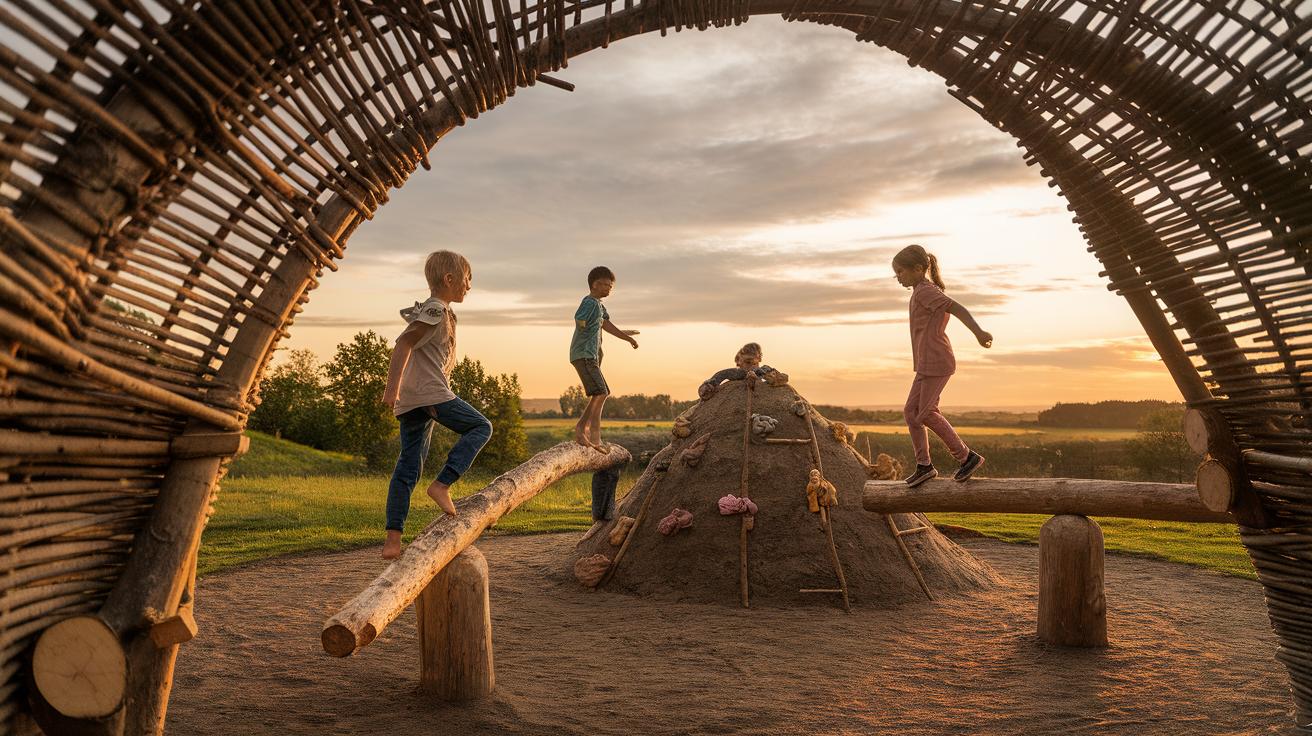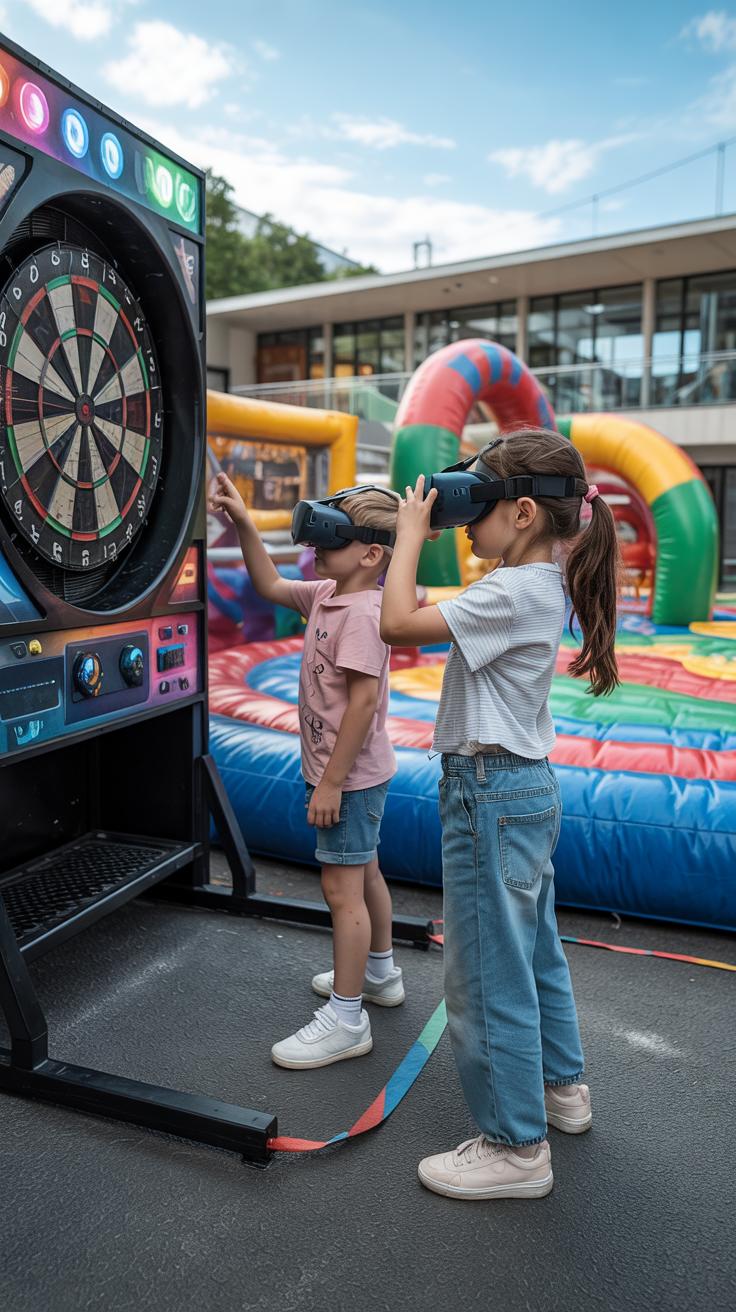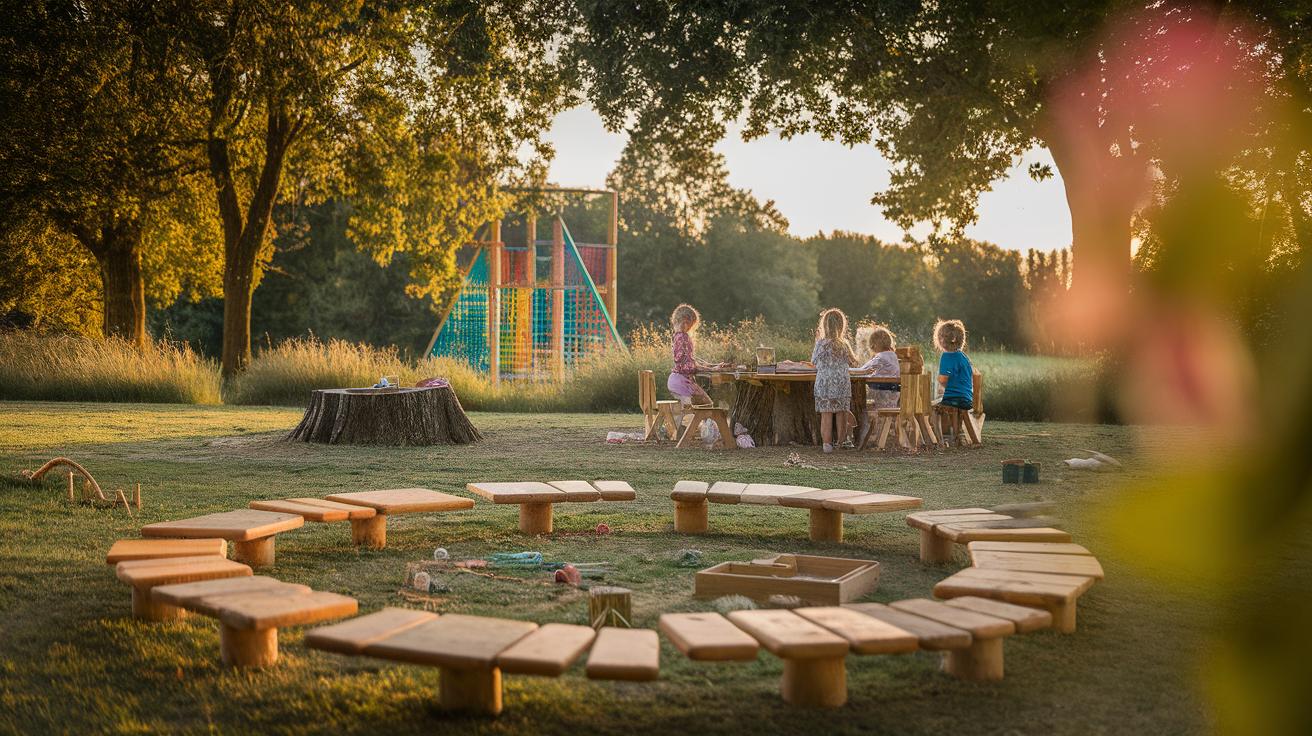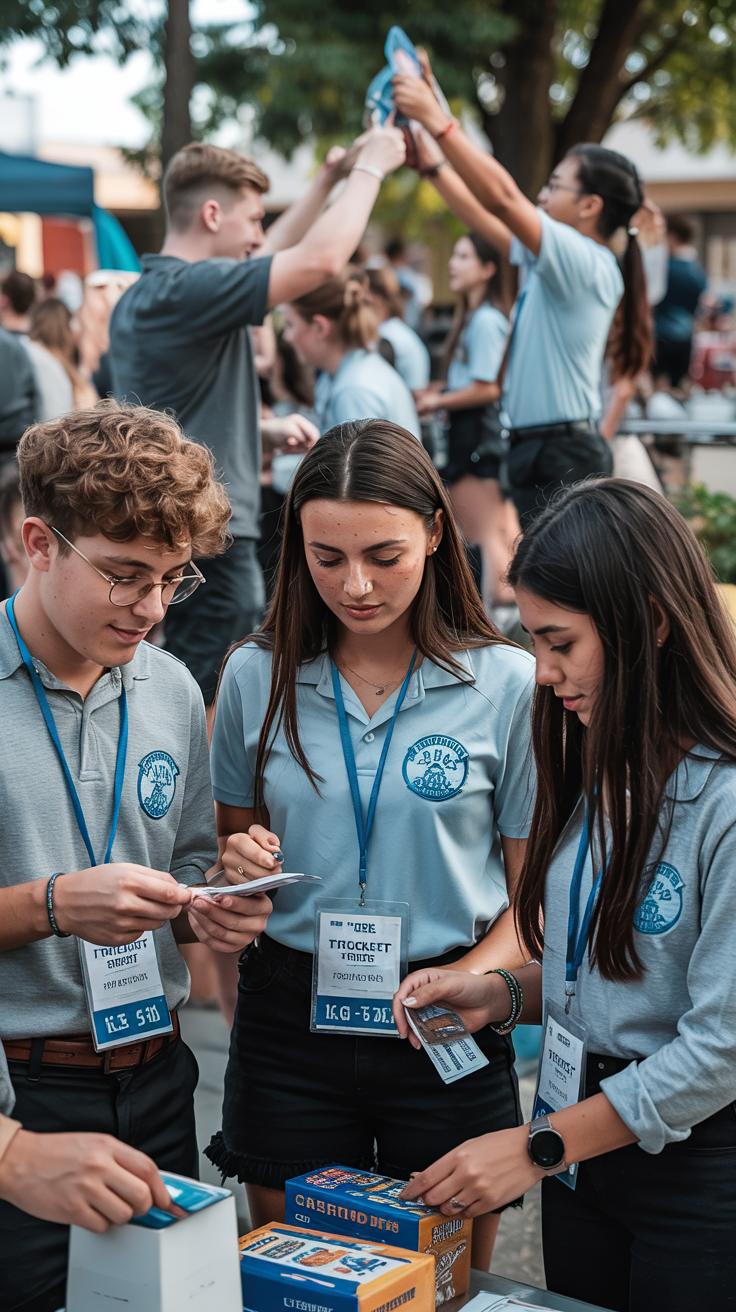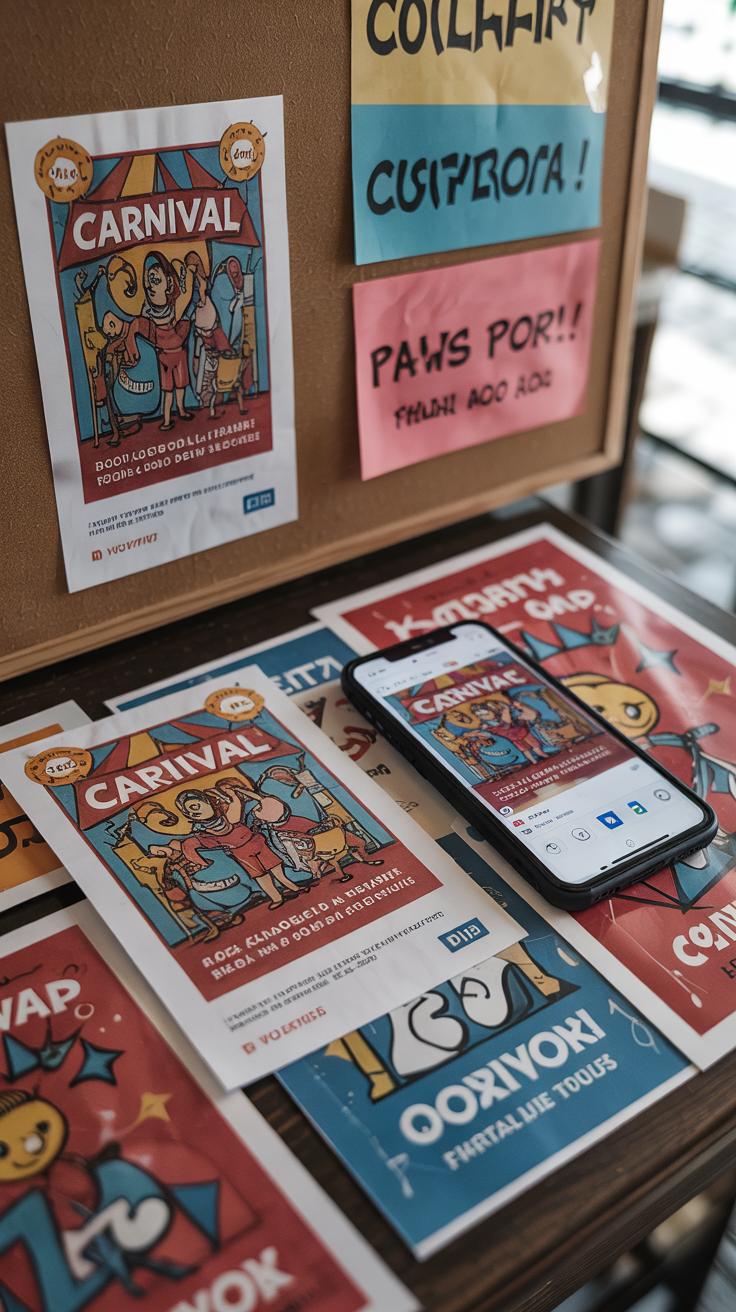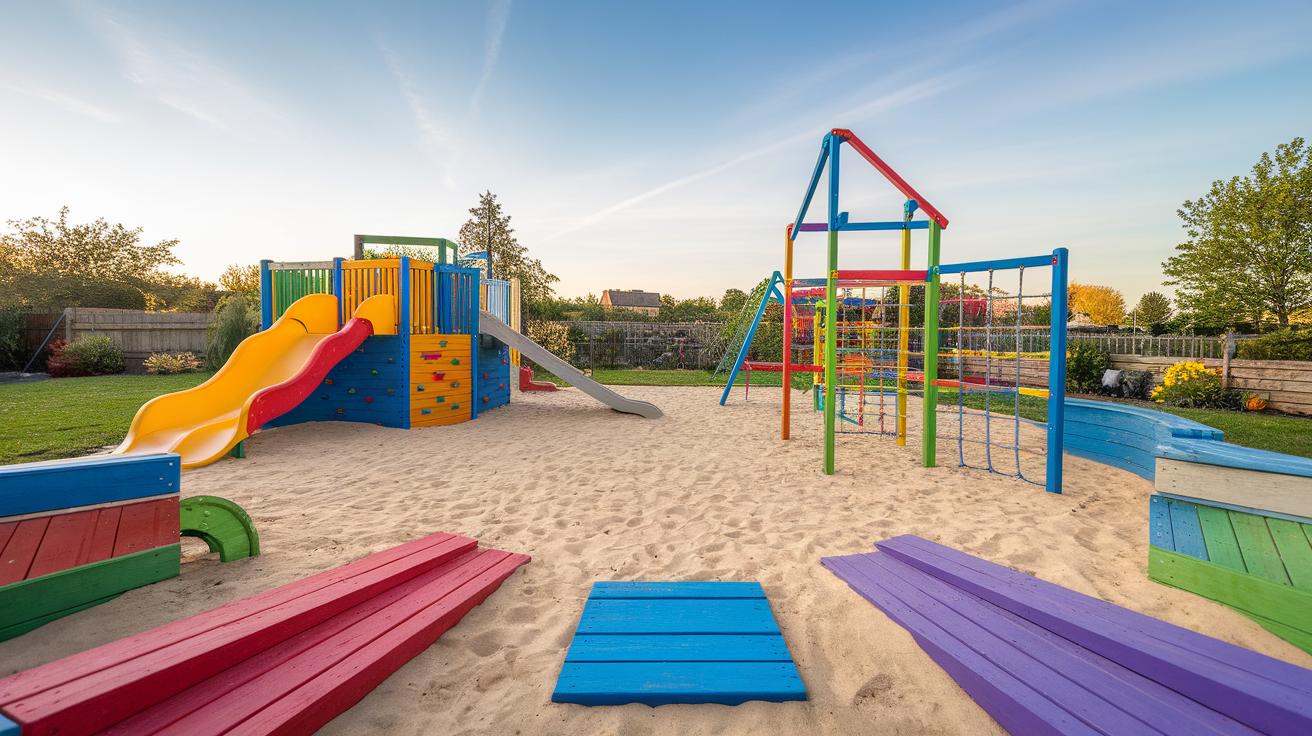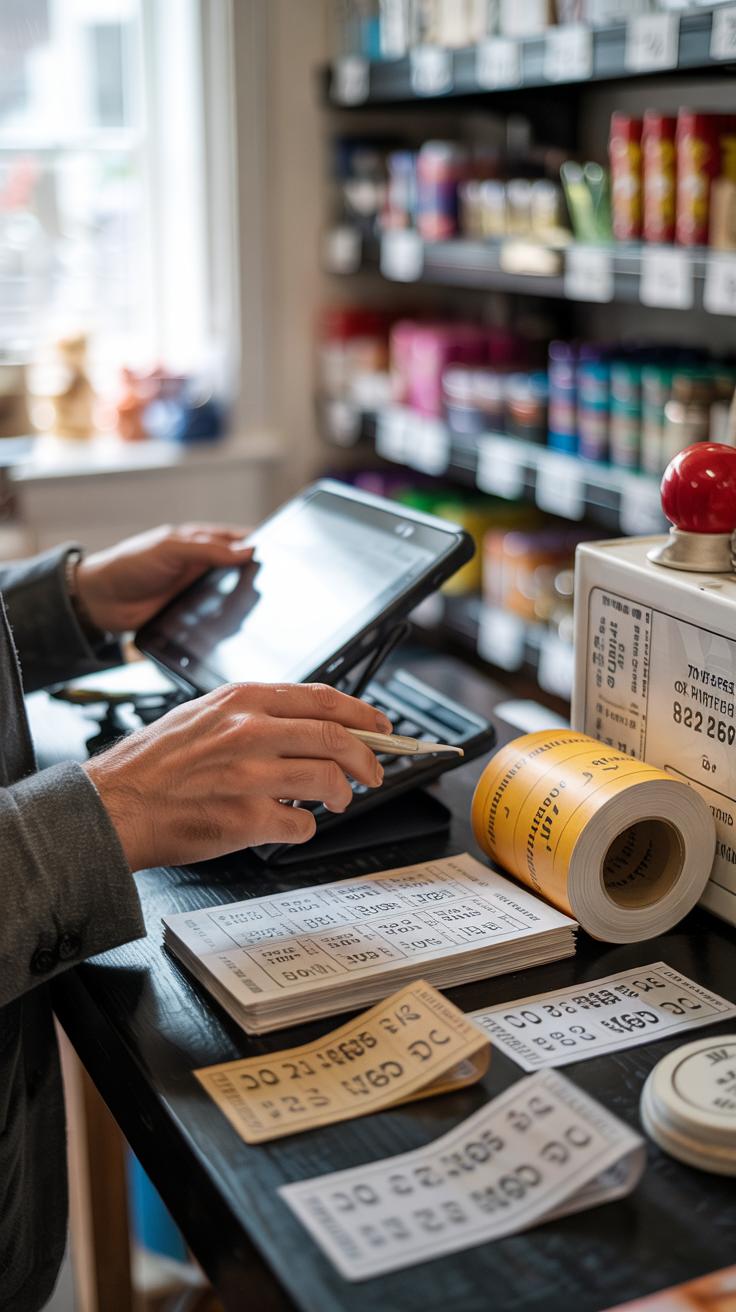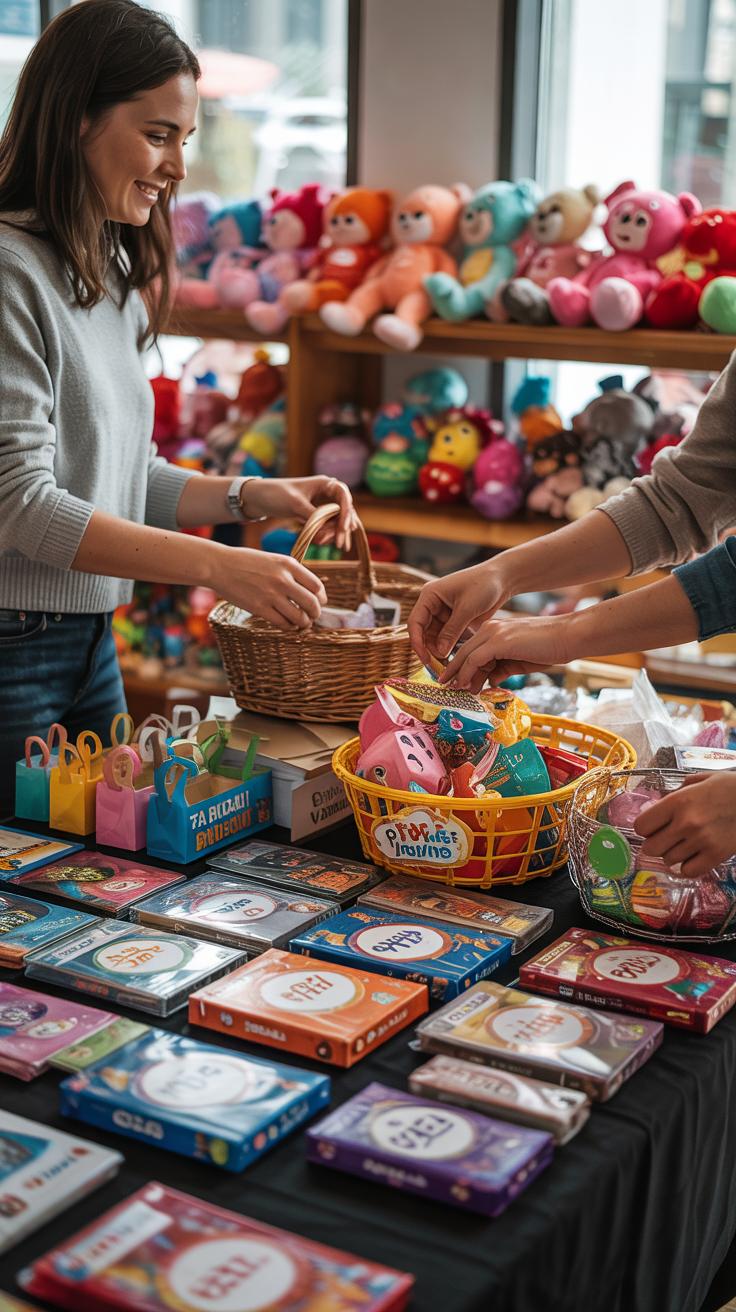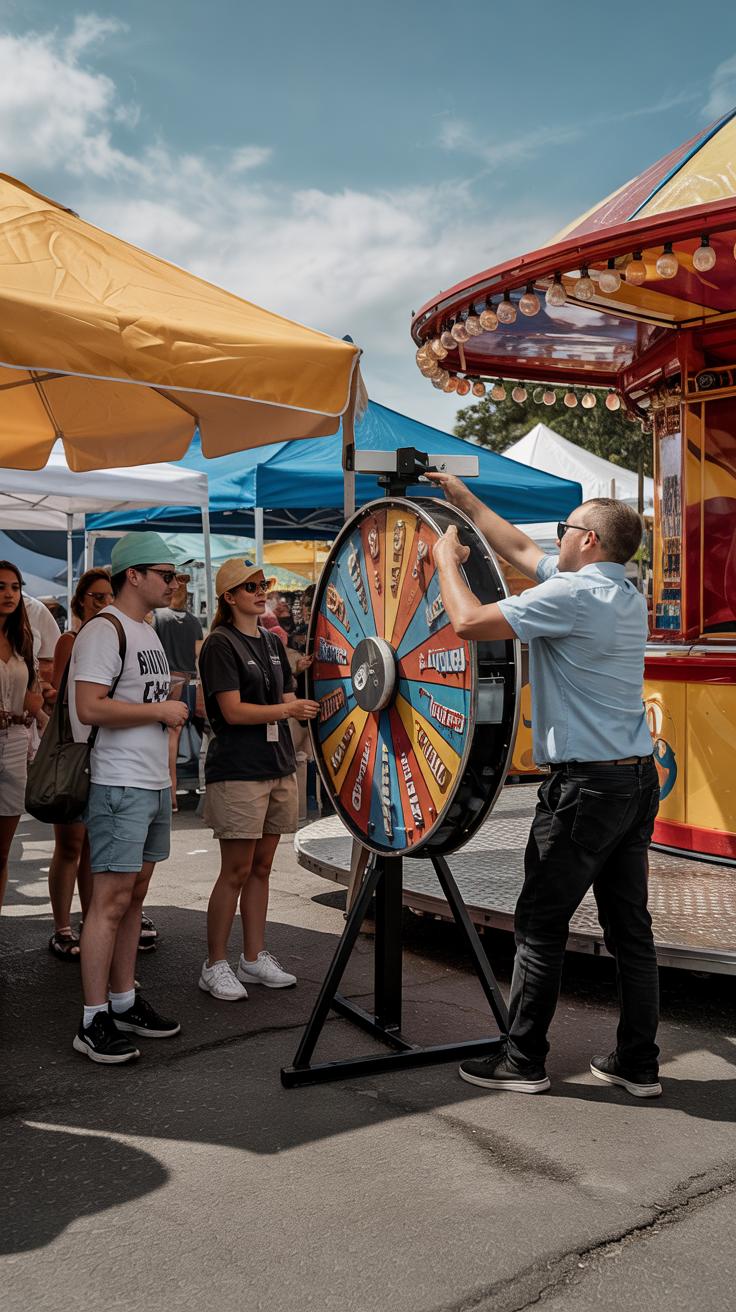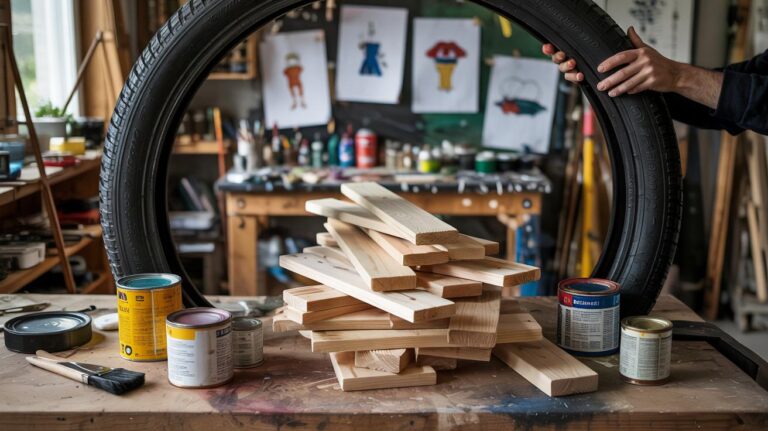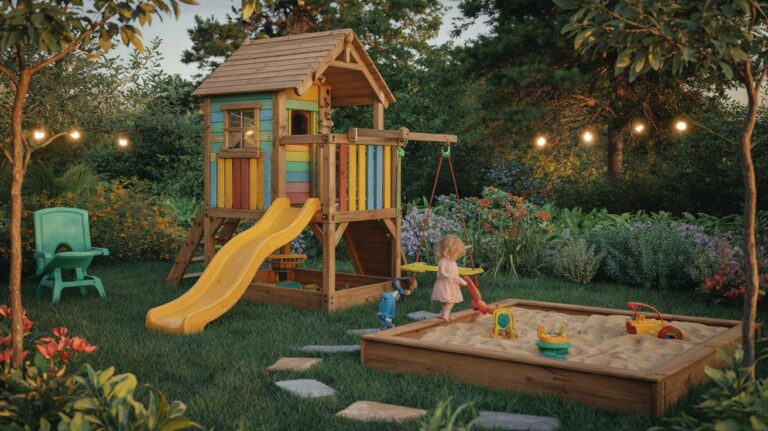Introduction
School carnivals offer a unique chance for communities to come together to support a common cause. These events are not just fun fairs; they play a vital role in raising money for school programs and activities. Every carnival features a variety of games that attract participants of all ages, making the event lively and engaging. You can use these games to both entertain and raise funds effectively. The variety of games you select can impact the success of your fundraising efforts significantly. What type of games will appeal to your audience the most?
Choosing the right carnival games not only maximizes participation but also encourages generous contributions. Games that are easy to organize and enjoy will keep attendees involved throughout the event. Furthermore, you should consider the resources available and the ease of setup when planning your games. This article provides practical insights on organizing school carnival games that can help you achieve fundraising goals. What makes a game successful at a school carnival, and how can you pick games that fit your community’s needs?
Planning Your School Carnival Games
Planning your school carnival games early ensures your event runs smoothly and raises the most money. Start by reviewing what materials, volunteers, and funds you already have. This helps you avoid overspending and pick games that fit your budget and available help. Knowing your audience is also key. Think about the age groups attending and what games they’ll enjoy most. Games should attract many players without creating long waits or safety risks.
Organize game areas so people can move easily between stations. Group similar games together to keep guests interested and maintain a clear path for foot traffic. Use barriers or ropes to guide visitors and prevent overcrowding. Make sure each game spot is supervised by trained volunteers who understand safety rules. Clear signage helps players find their way and know the cost or prize details right away.
Assessing Your Resources
Take stock of what you already have before buying new supplies. Count your game materials and check their condition. Identify how many volunteers are available and what skills they bring. Knowing your budget limit helps you choose games that won’t strain your funds.
Focus on games that require little to no cost but promise high fun and engagement. For example, a bean bag toss only needs bean bags and targets, which you may have on hand. Avoid games that need expensive equipment or lots of setup time if you can’t support them fully. Prioritize those that can attract the crowd and keep players involved for longer.
Creating a Game Layout
Design your carnival layout with easy movement in mind. Place popular games near entrances to draw visitors quickly. Leave wide paths between games to avoid bottlenecks and make navigating comfortable for families with strollers or wheelchairs.
Use clear, visible signage for each game showing instructions, prices, and prizes. Group fundraising booths close to game areas so players can purchase tickets or prizes easily after playing. Arrange areas to keep an open line of sight, so volunteers can watch for safety and help players fast. A well-planned layout improves attendance and keeps guests happy throughout the event.
Choosing Classic Carnival Games Everyone Loves
Traditional games like ring toss, sack races, and balloon darts hold a special place at school carnivals. These games attract families because they are familiar and easy to join. Many students feel comfortable trying them, no matter their skill level or age. You can adjust the difficulty by changing the size of targets or the length of the race. For example, smaller rings or longer distances can make ring toss more challenging for older kids. Balloon darts can be softened by using velcro darts for younger players. Sack races can have shorter courses or team relays to include all grades. These games offer fun for all ages while boosting fundraising by encouraging repeated play. Which classic game in your school carnival could be refreshed to draw more participation?
Ring Toss Variations
The basic ring toss involves tossing rings onto bottles or pegs, but you can change this to increase excitement. Use rings of different sizes to test players’ aim. Larger rings help younger children, while smaller rings raise the challenge for older students. Change the throwing distance to make the game easier or tougher. Offer tiered prizes—the harder the toss, the better the reward. Try using glow-in-the-dark rings to make nighttime carnivals more lively. Set up team rounds where players combine their scores for a group prize. Can adjusting ring toss rules encourage more players to stay and spend?
Sack Race Fun
Sack races bring energy and laughter to your carnival. Participants hop inside burlap or fabric sacks and race to the finish line. The game promotes friendly competition and teamwork, especially in relay formats. You can let younger children race shorter distances or hold partner races to build cooperation. Keep the area clear and choose soft surfaces like grass to prevent falls. Remind players to wait their turn and wear comfortable shoes for safety. Sack races encourage spectators to cheer loudly, making the event lively. How might including sack races encourage more group participation and fun at your carnival?
Innovative New Games To Engage Your Crowd
Creating exciting game ideas brings new energy to your school carnival. You want games that grab attention and invite players to join again and again. Games like obstacle courses, mystery boxes, and digital spin wheels offer fresh ways to keep your crowd involved.
Obstacle courses challenge participants physically and make the event lively. Mystery boxes build curiosity, encouraging visitors to take chances to win prizes. Digital spin wheels add a modern twist and allow quick, engaging play with instant rewards.
Focusing on interactivity makes your carnival stand out. Ask yourself which game will get parents, students, and staff excited to join and cheer. When you aim for novelty, your fundraising efforts feel less like a sale and more like fun moments shared by the whole community.
Obstacle Course Setup
Designing an obstacle course that fits all ages means balancing fun with safety. Use items like cones, ropes, hula hoops, and small hurdles to build clear challenges. Keep the space wide to avoid crowding and select soft surfaces like grass or mats.
Test the course before the event. Make sure younger kids can finish without frustration and older participants can find enough challenge. Simple tasks like crawling under ropes, jumping through hoops, or weaving between cones make great sections.
Label each station with instructions. Consider timing players for extra excitement or setting team goals. Think about adding prizes for finishing times or completing all obstacles to bring extra motivation.
Mystery Box Challenge
Mystery boxes hold prizes that remain hidden until the player chooses one. This game works by stirring curiosity and encouraging people to try multiple times. Each box can contain items like small toys, coupons, or candy.
Vary the prize values to keep interest high. Some boxes may offer big rewards, while others hold smaller treats. This mix encourages players to return and try to find the better gifts.
Set a reasonable ticket price for each try and make sure to replenish boxes as the game runs. Make your boxes colorful or decorated to draw attention. Ask yourself how the element of surprise can boost excitement at your carnival while helping you raise more funds.
Involving Students In Game Management
Assigning students to manage carnival games offers more than just extra hands for your event. When you give students roles like scorekeepers, ticket sellers, or game referees, they learn to take responsibility seriously. These tasks require paying attention to details and making quick decisions. That builds trust and confidence in their abilities.
Imagine a student running the ticket booth, handling money, and keeping track of sales. They gain real-world experience managing resources. A student referee ensures fair play by enforcing rules, which teaches leadership and fairness. Scorekeepers learn how to track points carefully and maintain records accurately.
Could your carnival benefit from student-run games? Their involvement often increases the event’s energy and helps grow leadership skills. You give them meaningful jobs, and they rise to the challenge.
Training Student Volunteers
Training students for their game roles needs to be quick and clear to keep everyone confident and ready. Start with simple instructions. Use short demonstrations so students can see exactly what to do. For example, show how to count tickets or explain game rules step-by-step.
Break training into small sessions focused on each role. Let students practice their duties before the carnival begins. Use checklists they can follow during the event. Encourage questions so no one feels unsure. Pair new volunteers with experienced ones for support.
Would you try short role-plays to help students get comfortable? Preparing them well helps avoid confusion and keeps the event running smoothly.
Benefits For Students
Managing carnival games helps students build teamwork by working closely with others to run a game successfully. They practice clear communication, explaining rules and answering questions from players. When problems arise, such as disputes or running out of prizes, students learn to solve these calmly and quickly.
These skills go beyond the carnival. Teamwork and communication help in school projects and later in jobs. Problem-solving shows students how to think on their feet.
How might your students’ confidence change after managing a game? They often feel proud to contribute and grow stronger leaders through these hands-on experiences.
Marketing Your School Carnival Effectively
Promoting your school carnival is key to attracting a large crowd and raising more funds. You want as many families and community members as possible to come and enjoy the event. Start by identifying where your target audience spends time, both online and offline. Use flyers, social media, and local newspapers or community bulletins to spread the word.
Flyers can reach parents at school drop-off or local businesses. Social media posts let you connect quickly with a wider audience and encourage shares. Contacting local papers or community blogs can help gain attention from people who might otherwise miss the announcement. Have you thought about involving students in handing out flyers? Their involvement can also create excitement around the carnival.
The more channels you use, the better your chances of getting a full crowd. When people hear about the carnival early and often, they are more likely to plan to attend and bring friends. What’s your current plan for promoting the event? Could it benefit from adding one or two of these methods?
Creating Eye-Catching Flyers
Your flyers need to grab attention and provide all the key details clearly. Use bright colors to stand out but keep the text easy to read. Include the date, time, place, and ticket information near the top. Add images of past carnivals or fun game scenes to spark interest.
Keep the message short and focused. A flyer crammed with too much info can overwhelm people and end up ignored. Use bullet points for important info and a bold headline that makes people want to read more. Print enough flyers to cover busy spots like local shops, libraries, and the school office.
Think about using a clear call to action like “Join us for fun and prizes!” or “Support our school while having a great time!” Where would you place flyers for the best visibility? Could students help with distribution to reach more families?
Using Social Media Channels
Social media is a fast way to reach parents and neighborhood groups. Write posts that ask questions or invite comments to boost engagement. For example, you might ask, “Which carnival game do you want to see this year?” or share sneak peek photos of the prizes and game setups.
Use simple language and post often but don’t overwhelm followers. A countdown to the carnival with daily updates can keep excitement growing. Encourage parents to share posts in their networks to widen your reach beyond just the school community.
Make sure to include clear details in every post and a link to buy tickets or learn more. Could you create a short video showing students preparing the games? Videos get more views and shares, helping spread your message even further.
Setting Ticket Prices To Maximize Fundraising
Finding the right price for your carnival game tickets can shape the whole fundraising outcome. Your goal is to keep prices fair while encouraging guests to buy more tickets and play often. Start by considering your audience’s budget and the cost of running each game.
Offering bundle deals can make ticket buying feel like a better deal. When people see they get more plays for less money per game, they tend to spend more overall. Activity passes that grant unlimited plays for a set time or a fixed number of plays also keep guests engaged longer.
Another option is adding donation-based entry where visitors pay what they can or want. This can attract people who might hesitate to buy tickets but still want to support the cause. You might combine this with ticket sales, allowing a donation plus tickets for games.
How do you balance fair pricing with maximizing donations? Experimenting with different ticket bundles and donation options might reveal what works best for your crowd. Keep records of what brings in more participation and funds.
Bundle Deals Benefits
Selling tickets in bundles increases participation by offering more value. When guests know they get several plays at a discounted rate, they feel encouraged to try more games. This translates to more money raised and more fun for everyone.
For example, a pack of 10 tickets sold for the price of 8 promises savings and motivates people to invest upfront. Families enjoy bundles because they stretch their carnival budget and allow kids to play freely.
This approach also speeds up the buying process. Visitors purchase tickets once, then focus on enjoying the games. You reduce lines at ticket booths and increase game traffic, making the carnival lively and profitable.
Donation-Based Entries
Allowing voluntary donations alongside ticket sales invites generosity beyond set prices. You can set a suggested donation amount but leave it open for guests to give more or less. This option works well at entrances or special game booths.
Consider offering small perks for donations, such as stickers, entry into a prize drawing, or thank-you notes. These incentives encourage giving without feeling like a purchase.
Donation-based entry can reach guests who want to support your school but are hesitant to buy tickets. It also creates a sense of goodwill and community spirit. What small thank-you can you offer to make donors feel appreciated and motivated?
Securing Prizes That Motivate Participation
Prizes play a big role in encouraging kids and families to join games at your school carnival. When players see exciting rewards, they want to try their luck and have fun. The prize motivates them to keep playing, which boosts fundraising success.
You can ask local businesses to donate appealing prizes like gift cards, small toys, or snacks. These donations save money and offer variety that feels valuable. Approach businesses with clear information about your event and explain how their contribution helps the school and the community.
Simple, fun rewards also work well. Small handmade crafts or certificates celebrating effort and success keep costs low while showing players they are appreciated. Think about what will make your players smile and feel proud, rather than just what is expensive.
How can you create prize options that excite different age groups? What types of rewards will motivate both kids and parents? Answering these questions helps you design a prize system that keeps players coming back and contributes to a lively, successful carnival.
Partnering With Local Businesses
Approach local shops and restaurants with a polite and clear message about your carnival. Tell them who you are, what the event supports, and how their donation can help. Show how their gift will reach many families in the community.
Provide options, such as donating prizes or sponsoring a game. Sponsorship can be as simple as putting their logo on a game booth or mentioning them in event materials. Businesses appreciate recognition for their help.
Try to connect with business owners in person or by phone. Personal contact builds trust and increases the chance of donations. Bring a simple letter explaining the event and the benefits for businesses.
Can you find businesses that relate directly to your game themes? For example, a bookstore might donate prizes for a reading game. Matching businesses to your carnival ideas makes proposals more appealing and tailored.
DIY Prize Ideas
Affordable prizes can still make players happy. Certificates with colorful designs praising winners work well and cost little. They give kids a goal to aim for and a keepsake from the carnival.
Handmade crafts like friendship bracelets, painted rocks, or decorated bookmarks are fun rewards you can create with students or volunteers before the event. These add a personal touch and show care.
School-themed items, such as pencils, stickers, or buttons with the school logo, encourage pride and community spirit. These prizes also keep your budget in check.
Consider using leftover or donated materials an eco-friendly way to craft prizes. Could your art class help make prizes? What small items do you already have that players would enjoy?
Ensuring Safety And Inclusivity At Your Games
Keeping everyone safe during your carnival games is a top priority. Clear safety rules help players understand what to do and avoid accidents. Set up stations with proper supervision so adults can step in quickly if needed.
Use equipment designed for safety. For example, choose soft balls instead of hard ones or lightweight bean bags. Explain rules clearly before the game starts to prevent confusion and risky behavior.
Have you thought about how to include kids with different abilities? Making your games inclusive lets every child join in happily and comfortably. Modify games by offering alternative ways to play, like using larger targets or slowing the game pace.
Consider players who use wheelchairs by ensuring enough space around the game area. For kids with vision impairments, add tactile markers or verbal cues. When children feel welcome, they enjoy the carnival more and fundraising benefits increase.
Safety Protocols
supervise every game station to monitor play and guide children safely. Train volunteers to spot hazards and step in when necessary. Use clear, simple instructions so kids know what behavior is expected.
Inspect equipment before use. Fix or remove anything broken or sharp. Set limits on how many children can play at once to avoid crowding and accidents. Make sure the game surfaces are even and free from obstacles.
Consider first aid readiness. Have a kit nearby and someone who knows basic treatment. Encouraging handwashing or sanitizing before and after games helps reduce illness spread during your event.
Inclusive Game Features
Design games with flexibility. Allow players to adjust the difficulty or pace according to their ability. Replace complex motor tasks with simple actions, like tossing a soft ball instead of throwing hard objects.
Use large, colorful game pieces so children with vision challenges can see them easily. Auditory signals like bells or claps can help players who rely on hearing. Think about games that don’t require standing, such as seated ring toss or bean bag toss at a table.
Invite feedback from parents or caregivers about what works best for their children. This insight can help you create welcoming setups where every child feels confident to join.
Handling Game Day Challenges Smoothly
Unexpected problems often arise during school carnivals. Crowds grow larger than planned, equipment fails, or volunteers don’t show up. Preparing for these challenges keeps your event running smoothly.
Plan for busy game areas by setting up clear lines or signs to keep players in order. Assign someone to monitor each game and step in quickly if problems appear.
Test all equipment before the carnival starts and have spare parts or backup materials nearby. For example, extra balls for ring toss or backup prizes can save time and frustration.
Volunteer absences may happen. Keep a list of backup helpers you can call on the day of the event. Cross-train volunteers so they understand multiple games or roles. This way, someone can cover if needed without gaps in service.
Ask yourself: How will you handle a sudden rush at a popular game? What if a key volunteer doesn’t arrive? Planning these answers ahead helps prevent small issues from turning into big problems.
Managing Crowds Effectively
Busy games often attract large groups. Managing the flow keeps everyone safe and happy. Use ropes, cones, or tape to form clear waiting lines. Make sure the queue is visible and easy to follow.
Assign a volunteer to control the crowd at each busy game. Their job is to guide people, answer questions, and prevent pushing or cutting in line.
Keep wait times short by moving players quickly and clearly announcing when it’s their turn. For example, use numbers or tickets so players know when they will play next.
Consider spreading popular games across different areas to reduce bottlenecks. You could also offer prizes that don’t require long wait times to keep interest high.
Will your crowd control plans allow players to enjoy the games without frustration? Clear instructions and visible volunteers make a big difference.
Backup Staffing Plans
Having reliable backups is essential for handling volunteer absences on game day. Maintain an updated list of willing community members or parents who can step in if needed.
Reach out before the carnival to confirm their availability. Sending reminders a few days before helps reduce last-minute gaps.
Train volunteers on multiple games and roles during setup or practice sessions. The more games each person knows, the easier it is to shuffle roles when surprises arise.
Create simple instruction sheets for each game station to help backups learn quickly. This reduces stress and keeps the carnival moving without pauses.
Ask yourself: How can you build a volunteer team flexible enough to adapt quickly? Strong communication and preparation are key to filling gaps without hiccups.
Measuring And Learning From Your Carnival Success
Tracking how much money your carnival raised is a key step. Start by recording sales from each game and food booth separately. This helps you see which activities earned the most. You might find some games were more popular or more profitable than others. Tracking these numbers also makes it easier to set goals for your next event.
Collecting feedback gives you a clear picture of what attendees thought. Use short surveys that parents, students, and volunteers can fill out quickly. Asking just a few simple questions, like “What was your favorite game?” or “What could be better?”, invites honest answers without taking much time. Comments on what worked or what caused delays are valuable.
After the carnival, meet with your volunteers. These debrief sessions let you discuss what went smoothly and what didn’t. Volunteers often notice small problems that don’t show up in numbers or surveys. Hearing different viewpoints helps you prepare a better plan for next year. What changes will improve the experience and boost funds next time?
Gathering Feedback
Gathering opinions from everyone involved can be easy. Set up a digital survey sent by email or text after the event. Use simple tools like Google Forms or paper slips handed out at the end of the day. Don’t ask for long responses; keep questions short and clear.
Encourage volunteers to share thoughts during a quick meeting right after the carnival closes. Parents and students might prefer sharing ideas through social media or a dedicated comment box. Listening to their views helps you spot what guests enjoyed and what needs fixing.
Planning Improvements
Look at your sales data and feedback to spot patterns. Did one game earn far more than others? Did a particular booth run out of prizes too fast? Did survey answers highlight confusion about ticket prices or long wait times? Those details show where to focus your efforts.
Set realistic goals based on what worked well. For example, if a new game attracted lots of players, try adding similar games next time. If volunteers pointed out bottlenecks at check-in, plan more helpers or faster systems for entry. How can you make your school carnival more fun and profitable next year?
Conclusions
In organizing a school carnival, selecting engaging games is critical to attract and maintain participant interest. It is useful to balance classic games with unique activities that stand out. Teams can benefit from involving volunteers and local businesses to help manage games and provide prizes. Keeping games simple, fun, and affordable will ensure that more people take part and contribute. What has worked best for your school community in the past?
Overall, school carnival games are a strong tool to boost fundraising success. Remember to plan carefully, promote your event widely, and create an inclusive environment welcoming every participant. Monitor results to understand which games generate the most excitement and funds for your future events. Your efforts will support valuable school initiatives and create a memorable community experience. How will you make your next school carnival a hit?

